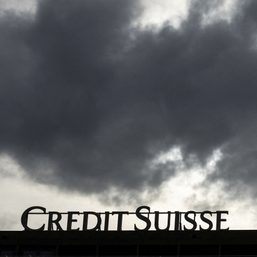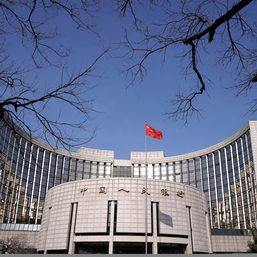SUMMARY
This is AI generated summarization, which may have errors. For context, always refer to the full article.
![[ANALYSIS] Philippine market reactions after SVB fall](https://www.rappler.com/tachyon/2023/03/ph-market-reactions-svb-march-16-2023.jpg)
Are you one of those who got excited by the good-than-expected-earnings reports of the companies of first and second liner stocks early last week, blamed yourself for being unable to take action, and yet was just too relieved that you failed to do so because the market closed lower at the end of the week?
You also felt lucky with your failure to take action because of what you heard of after trading hours when investors on the other side of the globe in the US woke up Friday morning (their time) to the shocking news that the Silicon Valley Bank (SVB) was shut down.
As the 16th largest lender, the collapse of SVB is considered as the biggest bank failures in the US since the fall of Washington Mutual in 2008.
Washington Mutual or “WaMu” (as it is called for short), was the US’ largest savings and loan association bank until its collapse, which (together with the fall of investment banks Lehman Brothers and Bear Stearns) fueled the financial crisis in 2008 and the recession that followed.
I was in the in the US when this financial disaster happened. As it led to the meltdown of financial markets the world over in the following days – then in weeks and months – I also went through this rather highs and lows of emotions that drove me into aimless actions and half-hearted decisions as it hit my own investments.
This mental and emotional situation that weakens critical judgment happens when you don’t have a trading system. Or, if you have, you fail to use it consistently.
Market reactions on SVB fall
Before we proceed further, let’s take a look of what happened early this week after last Friday’s collapse of SVB.
US stocks particularly ended mixed on Monday, March 13, in a described “turbulent session” as the Dow and S&P 500 fell, and the Nasdaq rose. President Joe Biden’s assurance to guarantee all depositors of their money sparked interest in oversold bank shares on Tuesday, emboldened as well by hopes that this incident will force US government regulators to be more easy on its plans to raise interest rates. US equities are expected to soon hold up.
Asia-Pacific markets led by Japan, Korea, and Hongkong tumbled as well. This may soon change as assessments like this one from Moody’s Investors Service, state that banks in the region don’t have material exposures to SVB and other failed banks that followed, so that investors in the region have nothing to worry about.
The PSEi, on one hand, slipped slightly lower last Monday as investors traded with caution, closing at 6,544.45, down 45.43 points or 0.68% on a volume of 913 million shares and total value turnover of P25.53 billion. On Tuesday, the PSEi settled at the end of the session with a comparative bigger loss of 151.12 points or 2.30% at 6,393.33 but on its more regular daily average volume and total value turnover of 968 million shares and P6.78 Billion, respectively.
This came about amid a late afternoon report from the Bangko Sentral ng Pilipinas (BSP) and the Bankers Association of the Philippines that “local banks have stable funding and ample liquidity.”
Incidentally, trading on Monday had a very big value turnover of P25,526,023,724.68. Half of it was largely from the block sale of International Container Services, Inc. (ICT) shares.
If you look at the total value turnover of foreign investors, it is not difficult to guess as to who sold them. Foreign investors were net sellers for the day at the same time accounted for 50.72% of total market transactions. As to why, the answer is obvious.
The PSEi climbed back on Wednesday with a net gain for the day of 72.77 points or 1.13% when it settled at the 6,466.1 level, notwithstanding that the fact that foreign investors remained as net sellers. Noticeably, total volume rose to 1.19 billion shares and value turnover was also much higher than current daily average at P11.07 billion (which included Dollar Denominated Securities transactions converted to Philippine peso based on the previous day).
Amid the mixed trading results arising more possibly from continuing weak sentiments due to variables already present before last Friday’s collapse of SVB, the 20 or so stock picks I recommended in my previous article still stands. They suffered in price declines in various degrees since Monday, but have certainly not lost their prospective potentials. This brings us back to the subject of trading systems.
Anatomy of a trading system
A trading system is defined as a set of rules and principles. It is especially a formula for “buy” and “sell” signals (“entry” and “exits” signals as they are otherwise called) through the use of mechanical devices.
However, a trading system is needless to be strictly mechanical in nature. It could be discretionary. From textbook narratives, this is said to be the “use of experience, intuition, or judgment on entries and exits.” But just the same, both are made up of similar set of rules and principles especially designed to obviate the influence of emotion in one’s decision-making process.
The book, “Trade Your Way to Financial Freedom” by Van K. Tharp, is a good material on trading systems. It was my first book in the use of a trading system. It was from him that I got idea of how to stalk the market as in using set ups for “entry” and “exit.” He also teaches “when to finally fold to protect your capital.” He introduces you, as well, to what is called “position-sizing,” a strategy employed by professional gamblers to maximize their winnings despite lower odds to their favor.
Like all other reference books in developing a trading system, the first step he says you have to do is to make a realistic assessment of yourself – your patience, emotional temper, ability to react, and most of all, your ability to maintain discipline. Once you have done this, start to acquire enough market information, then set your investment objectives and period of time frames for your investments. Next, acquire enough knowledge on most of the following technical analysis devices, such as Relative Strength Index or RSI, Stochastics, Moving Average Convergence Divergence or MACD, Accumulation/Distribution line, On-balance volume or OBV, Japanese Candlesticks, to fine tune your ”entries” and “exits.”
Don’t be intimidated with these technical gobbledygook tools. While the math behind them are admittedly complex and beyond our ordinary mind, their use are easy to understand than you think.
Watch out for the step-by-step review of one unique trading system that I find fascinating and useful from another master market hunter, who is in addition “trading for a living.” – Rappler.com
The article has been prepared for general circulation for the reading public and must not be construed as an offer, or solicitation of an offer to buy or sell any securities or financial instruments whether referred to herein or otherwise. Moreover, the public should be aware that the writer or any investing parties mentioned in the column may have a conflict of interest that could affect the objectivity of their reported or mentioned investment activity. You may reach the author at densomera@yahoo.com
Add a comment
How does this make you feel?





There are no comments yet. Add your comment to start the conversation.